Szilágyi Mihály, the kingmaker

Szilágyi Mihály of Horogszeg (c. 1400-1460) was a Hungarian general, regent of Hungary, count of Beszterce (Bistrița, Bistritz, also Nösen), head of the Szilágyi-Hunyadi league and chief captain of the lower parts of Hungary, voivode of Transylvania. His person was very important in making Hunyadi János and his son, Hunyadi Mátyás alias King Matthias Corvinus, powerful. In this way he contributed greatly to the defense of the Kingdom of Hungary and Western Europe against the onslaught of the Ottoman Empire. Please note that I am using the Eastern order of names for Hungarians, with surnames coming first.
During the first third of the fifteenth century, the Ottoman Empire’s strength was tied up in wars and internal political tensions in Asia Minor, but having overcome the crises, the Ottoman state continued its European expansion with renewed vigour.
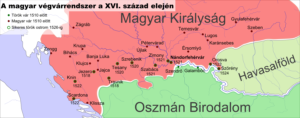
After the Empire had conquered a significant part of the Balkans, a new chapter in the history of Hungarian-Ottoman wars began in the 1440s. During the period of raids and sieges, several warlords made their names in history, among them Hunyadi’s brother-in-law, Szilágyi Mihály, whose name is in Hungarian historical memory mainly because he was the captain of the castle during the triumph of Nándorfehérvár (Belgrade) in 1456.

Szilágyi and Hunyadi János
Indeed, Szilágyi’s success was closely linked to the rise of the military genius Hunyadi János. Szilágyi belonged to an ordinary aristocratic family that took its name from the village of Horogszeg, which was their estate in the county of Temes. His sister Szilágyi Erzsébet was the wife of Hunyadi János. Szilágyi began his career in the service of his brother-in-law as the vice Comes of Torontál County.
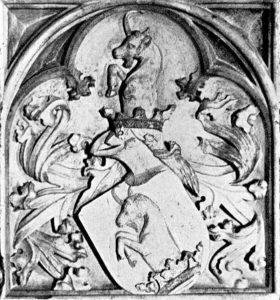
We do not know if he was involved in the fight against the peasant uprising of Budai Nagy Antal in 1437, but it is more likely that he was among the Székely troops who helped to put down this most devastating rebellion. You can read more about the Hungarian Székely border guards of Transylvania here:
https://www.hungarianottomanwars.com/essays/who-were-the-szekelys/
He had only one brother, Osva, and his two sisters were Erzsébet and Zsófia. He married Báthori Margit around 1440-45. They probably had several children, but none of them reached adulthood. We know that Szilágyi fought against the Turks in the battle of Várna and in the second battle of Rigómező (1448). You can read more about these battles here:
https://www.hungarianottomanwars.com/1372-1490/battle-of-kosovo-polje-1448/
On 29 May 1453, Byzantium was brought to its knees by the armies of the Ottoman Sultan Mehmed II, sending shock and fear throughout Europe. The Kingdom of Hungary prepared for the inevitable Ottoman attack by strengthening the fortress system on its southern border.

At the same time, Pope Callixtus III (1455-58) was trying to use all the resources of the Church to organize a crusade. Although Buda was informed in April 1456 that the Turks had begun the campaign against Hungary, a significant part of the high priestly and baronial bands did not march to the southern frontier. Similarly, the German and Bohemian crusaders recruited in Europe, mostly Germans and Czechs, were only near Vienna at the time.
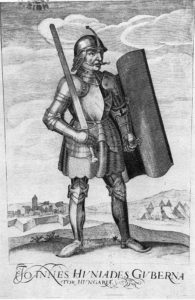
The Ottoman army consisted of nearly 100,000 men, supported by their navy on the Danube. Under the leadership of Sultan Mehmed II, they reached the walls of Nándorfehérvár (Belgrade) at the end of June 1456. Inside the castle, Szilágyi Mihály commanded the defense of about 7,000 men, while Hunyadi János was outside the castle with 10,000 soldiers. Another 25 to 30,000 armed peasants, recruited by the Franciscan preacher St John of Capistrano in the southern counties of Hungary, gathered at Zalánkemén. The siege began on 4 July and lasted almost three weeks.

As a result of the continuous fire of the Turkish cannons, the walls of the castle were leveled to the ground by 21 July. Then the Sultan, confident of his superiority, ordered a general assault, which was repulsed by the heroic defenders. The decisive battle was fought the next day. Before Mehmed could order another assault, Capistran’s crusaders crossed the Száva River and began pelting the Turkish camp with arrows. Initially, there were only seven archers but more and more soldiers joined them.

As the main Ottoman forces turned on the charging but poorly armed peasants, the castle’s defenders sallied out and the Turks, trapped between the two fires, retreated in panic, fearing they were surrounded. This final attack was led by Hunyadi János, but Szilágyi Mihály, Kanizsai László and Rozgonyi Sebestyén were also there, leading their iron-clad knights.
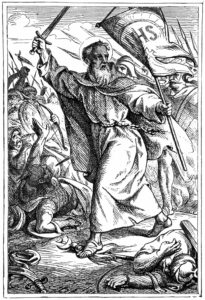
Sultan Mehmed, the conqueror of Constantinapolis, was driven from the castle in a bloodbath. The Ottomans suffered a crushing and sobering defeat. This victory protected Western Europe from Ottoman destruction for the next seventy years. We know that both Hunyadi and Capistrano died of the plague immediately after the siege. Szilágyi Mihály, however, survived and later rebuilt the castle of Nándorfehérvár from its foundations. But there were more troubles on the way. Read more about the victory of Nándorfehérvár and find out why the bells are rung at noon all over Christendom:
https://www.hungarianottomanwars.com/1372-1490/why-can-we-hear-the-bells-at-noon-1456/
After that, Szilágyi didn’t stop supporting the Hunyadi family against the Cillei clan: Lord Cillei Ulrik, the tutor of the young and spoilt king, was his mortal enemy. As it turned out, young King László V and his 4,000 soldiers came to the aid of Nándorfehérvár quite late, on 8 November 1456. Of course, he was accompanied by Lord Cillei. They wouldn’t have cried if they had seen Hunyadi and Szilágyi die.
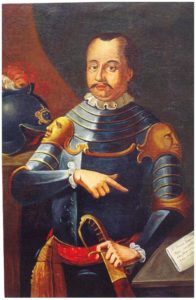
Hunyadi László, the elder son of Hunyadi János, went with his uncle, Szilágyi Mihály, to greet the king. They invited the king and Cillei together with some lords to Nándorfehérvár, but they closed the gates in front of the bodyguards. The next day, Hunyadi László had a brief argument with Lord Cillei, then drew his sword and killed him. Szilágyi is said to have taken part in the murder. Hunyadi László then forced the young king to make him the chief captain of the kingdom.
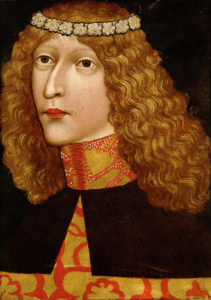
On his way back to Buda, King László stopped at Temesvár, where he was humiliated by Lady Szilágyi Erzsébet, the widow of the deceased Hunyadi János. The king had to swear an oath that he would not take revenge on the Hunyadi sons for the death of Cillei. The king also had to accept Hunyadi László and Mátyás as his brothers. Arriving in Buda, the king declared his oaths invalid and arrested both Hunyadi sons. Hunyadi László was beheaded in Vienna on 16 March 1457. The 14-year-old Mátyás (Matthias) was sent to Prague, where he was imprisoned.
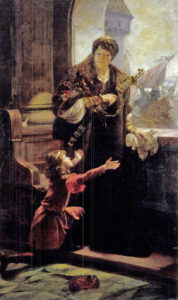
The murder of Cillei Ulrik led to further trouble, as Katalin, the wife of Lord Cillei Ulrik, was the daughter of the despot Brankovics. Szilágyi oversaw the fortification of Nándorfehérvár Castle and also kept an eye on the Ottoman raiding parties. We know that he defeated one of the raids of the Grand Vizier of Sultan Mehmed around Nándorfehérvár in 1457. At the end of 1457 (some say as early as 1456) he was in another kind of mortal danger: György Brankovics, the Serbian despot, attacked him. As Mihály and his brother Szilágyi László were riding in a four-horse carriage around the castle of Nándorfehérvár, Brankovics set a trap for them. Mihály jumped from the carriage and mounted a horse and escaped death, but his brother László died of his wounds. Mihály did not let his brother’s death go unpunished.
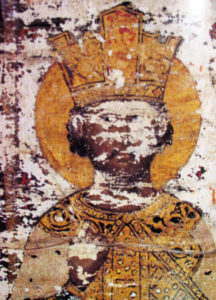
A few days later, he quickly gathered his troops and ambushed Brankovics at Kölpény, near the Száva River. After a stubborn resistance, Brankovics lost the two fingers of his right hand and Szilágyi captured him. Szilágyi deprived Brankovics of several lands owned by the despot in Hungary and then reconciled with him. Later, Brankovics’ lands were returned to him because Szilágyi needed the Despot’s support: he wanted to rely on him to make a king of the Hunyadi sons. We know that Brankovics died of his wounds in 1457.

In 1457, after the execution of his nephew Hunyadi László, Szilágyi chose Transylvania as the basis for a life-and-death struggle for supreme power, as the Hunyadi party was the strongest there and in the neighboring Hungarian Partium. The kingdom was on the verge of civil war. In Transylvania, the counties and the Székelys welcomed him with open arms, the gates of the castles opened for him, and only the royal German Saxons turned against him.

His political weight was appreciated and he became the leader of the Hunyadi-Szilágyi League. King László V died suddenly in Prague on 23 November 1457. The barons had to make peace. In the early days of 1458, in Szeged, Szilágyi reached an agreement with the leaders of the rival baronial party and succeeded in electing his nephew Matthias as king. The royal electoral assembly met in Buda at the end of January and Szilágyi deployed his armies on the Pest bank of the frozen Danube to underline his intentions.

The soldiers and the assembled nobles proclaimed Matthias, the younger son of Hunyadi, king on the ice of the Danube. However, Matthias was still imprisoned in Prague. Szilágyi was elected by the Diet (also on the ice of the Danube) to govern the country (regent governor) for five years until the 15-year-old Matthias was fit to rule.

Szilágyi and Hunyadi Mátyás
As Matthias (reigned 1458-90) was still a minor, Szilágyi acted as governor. He immediately went to Buda and took over the royal castle from Palatine Garai to give it to Matthias. At the same time, he arranged for the release of Matthias from captivity, who, on his return from Prague, hurried to express his gratitude to his uncle: he gave him the town of Beszterce, together with the county of Beszterce and the Radna valley. Szilágyi was also given back his lands in Kolozsvár and Doboka.

Earlier, the Saxon town of Beszterce had just defeated Szilágyi’s armies. Now Szilágyi and his troops from the Hungarian Great Plain rushed to the castle and took the town by force. His troops raped some of the inhabitants, blinded others, and cut off the hands, noses and ears of many. Matthias, who found it difficult to tolerate his uncle, was outraged by his atrocities in Beszterce. The young king imprisoned him in the castle of Világos and later sent an order to kill him. Fortunately, the new Pope Pius II (Enea Silvio Piccolomini) was intercepted by his ambassador, and Matthias withdrew his order in time.

Soon the Turkish threat called Lord Szilágyi to the southern parts of the kingdom, and he could devote less and less energy to politics. Nevertheless, young King Matthias tried to be independent of his tutors, and this soon led to a conflict between the governor and the king. Taking advantage of his uncle’s absence, Matthias convened a Diet in which he curtailed the governor’s powers and then forced him to resign. This infuriated Szilágyi, who sought contact with rival baronial circles and allied himself with the Hunyadi clan’s enemies, the Garai family of Simontornya Castle. Things got so bad that Matthias had him arrested and imprisoned in the castle of Világos.
However, Lord Szilágyi freed himself with the help of his cook: while Lábatlan Gergely, the captain of Világos Castle, was away, the cook and three loyal men warned the guards that the Turks were coming. The warriors left the castle and Szilágyi disarmed the few men guarding the gate with the help of some peasants he had hired. He took control of the castle and sent a message to Matthias. The king pardoned him and they made peace in Várkony. In 1459, Szilágyi fought the Turks with renewed vigor. The king appointed him chief captain of the southern parts of the kingdom and Szilágyi was also made voivode of Transylvania.

In the autumn of 1459, the Ottoman armies broke through the southern frontier, following the line of the Danube as far as Futak, destroying everything in their path. They were led by Bey Ali Mihaloglu. Szilágyi hastened to fortify the castles on the Lower Danube and then, with the help of Szokolyi Péter, he defeated the Turks. In 1460 Matthias confirmed the peace with Szilágyi. The king also dismissed 12 high-ranking noblemen from his court who were enemies of his uncle.
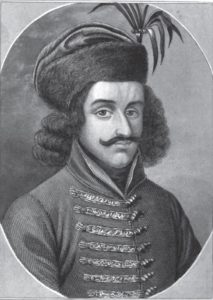
In response to the Turkish attack, Szilágyi led a retaliatory campaign in Serbia in 1460. He fought a battle against Bey Ali Mihaloglu at Posasin, near Szendrő (Smederovo) Castle in Serbia. Unfortunately, he had a much smaller number of warriors, so his army was surrounded by the enemy. He was taken prisoner by Bey Ali Mihaloglu, who sent him to Constantinople, where he was tortured and allegedly sawed in half because he didn’t want to reveal the weak points of Nándorfehérvár Castle. Finally, the 60-year-old warrior was beheaded by Sultan Mehmed II. It is said that King Matthias did not hurry to ransom him.

Lord Szilágyi Mihály had no adult children by his wife, Lady Báthori Margit. Szilágyi Mihály is remembered in Serbian epic poetry as Mihajlo Svilojevic or sometimes as “crni ban Mihail”, while in Ottoman chronicles he is referred to as “Kara Mihal”. Without his deeds, the star of the Hunyadi family might not have risen so high.

Dear Readers, I can only make this content available through small donations or by selling my books or T-shirts.
If you like my writings, please feel free to support me with a coffee here:
You can check out my books on Amazon or Draft2Digital, they are available in hardcover, paperback, or ebook:
https://www.amazon.com/dp/198020490X
or at https://books2read.com/b/boYd81


My work can also be followed and supported on Patreon: Become a Patron!http://Become a Patron!


https://hungarianottomanwars.myspreadshop.com/all


https://hungarianottomanwars.myspreadshop.com/all


